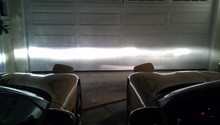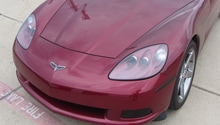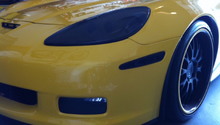Corvette: Headlight Legal Requirements
Headlight upgrades are easy and popular but often very illegal. Learn which side of the law your Corvette's headlights land on.
This article applies to the C5 Corvette (1997-2004), C6 Corvette (2005-2013) and C7 Corvette (2014-current).
Headlight laws are often tricky and unclear. With many modifications out there, it is hard to know what is legal and what could cost you a ticket. Laws are different from one state to another, so it is good to always check your state's laws. Your headlights should be turned on half an hour after sunset and half an hour before sunrise. If it's raining, it is required by law that you turn your headlights on no matter what time of the day it is. A good rule of thumb is to always inspect any aftermarket parts for DOT approval before buying them. If it doesn't have a sticker saying they're DOT approved, then their legality is debatable. The article covers three popular headlight modifications and their legal requirements.
HID Headlights
HID stands for high intensity discharge and is a newer lighting technology mainly applied to automobiles. It is illegal to run HID bulbs into a Halogen bulb housing, which means you can't use an HID bulb to replace an OEM bulb. If you want HID light, you need to install HID projectors, too. HID lights are two to three times brighter and emit light in a different pattern than halogens. That high brightness and different light pattern is why they cannot be placed in halogen bulb housings. HID lights come in various colors; however, the law requires you to have either yellow or white. Typically, bulbs rated over 8,000 K give off a blueish light. The higher the temperature goes, the bluer (and more illegal) they get.
On the plus side, HIDs greatly increase visibility at night and look great. HIDs have excellent side-to-side distribution but do cut off at a certain height, limiting upper visibility on very dark nights. Unfortunately, HIDs and requisite projector housings, or "retrofit" kits are expensive and can run anywhere from $300 to $1,000 for a set. Installation is easy with today's kits that have essentially become plug and play, requiring only basic mechanical skill and simple tools. Professional installation can add another $200 or so to the price. Xenon lighting has been an option with Corvettes since the C6 with its factory equipped projector housings.
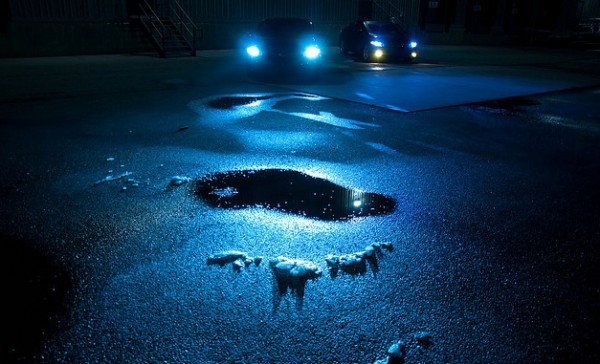
LED Headlights
LED, or light emitting diodes, are a newer form of lighting technology that is slowly becoming the norm in all areas, not just in the automotive sense. LED lighting is a much more energy-efficient lighting solution, often requiring less draw to be powered. In the automotive arena, LED headlights have the same legal concerns as xenon-HID headlights, even though the technology is different. Several aftermarket headlight housings have LED strips around the headlight lenses that change color. These "halo" housings are legal so long as the color they're displaying is white or yellow while driving.
LED headlights are the most modern option, and many new cars are beginning to make them standard equipment. They look great and are super bright. On the downside, they are considerably more expensive and still not as bright as HIDs. LEDs are quite a few years away from being the best light solution, but if you want the latest in headlight technology, this is it. Depending on what sort of kit you go with, LED headlights can cost anywhere from $300 up into the thousands, and professional installation can tack on a few hundred more. Similar to HIDs, modern kits can make this a simple process that requires only basic tools and skills for a handy do-it-yourself-er.

Blacked Out Lights
The law requires your headlight to be maintained in proper working condition. It also states that you should not cover it with any materials. Police officers usually don't enforce this law, but this doesn't make it less illegal. The ticket could get pricey, and it will require you to have clear headlights after that (also known as a "fix-it" ticket), which is an additional cost to the fine. Blacked out headlights could be done at home; however, due to the nature of tinting, or film laying, having a professional do it may be worth it for this particular project.
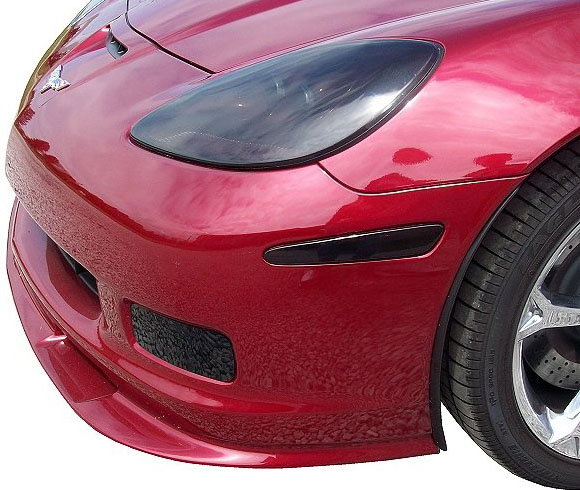
Related Discussion
- Headlight Legal Requirements - CorvetteForum.com

